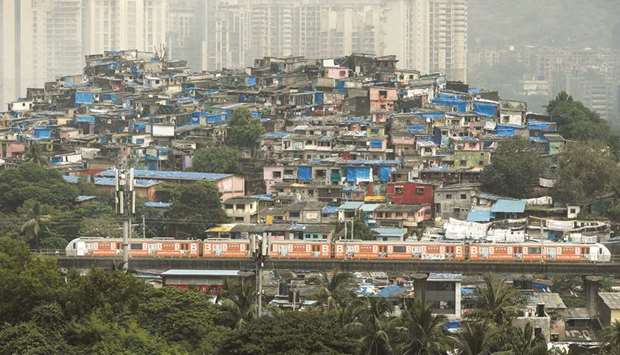At least half of India’s 1.3bn people are likely to have been infected with the new coronavirus by next February, helping slow the spread of the disease, a member of a federal government committee tasked with providing projections said yesterday.
India has so far reported 7.55mn cases of the coronavirus and is second only to the United States in terms of total infections.
But Covid-19 infections are decreasing in India after a peak in mid-September, with 61,390 new cases reported on average each day.
“Our mathematical model estimates that around 30% of the population is currently infected and it could go up to 50% by February,” Manindra Agrawal, a professor at the Indian Institute for Technology in Kanpur and a committee member, said.
The committee’s estimate for the current spread of the virus is much higher than the federal government’s serological surveys, which showed that only around 14% of the population had been infected, as of September.
But Agrawal said serological surveys might not be able to get sampling absolutely correct because of the sheer size of the population that they were surveying.
Instead, the committee of virologists, scientists and other experts, whose report was made public on Sunday, has relied on a mathematical model.
“We have evolved a new model which explicitly takes into account unreported cases, so we can divide infected people into two categories - reported cases and infections that do not get reported,” Agrawal said.
The committee warned that their projections would not hold up if precautions were not followed, and cases could spike by up to 2.6mn infections in a single month if measures such as social distancing and wearing masks were ignored.
Experts have warned that infections could rise in India as the holiday season nears, with celebrations for the festivals of Durga Puja and Diwali due this month and in mid-November, respectively.
Meanwhile, a study from a top research institute has said intensive care units (ICUs) at hospitals treating Covid-19 patients should do away with air-conditioning to limit the risk of infecting doctors.
Frontline health workers around the world have borne the brunt of the coronavirus crisis.
More than 500 doctors have died from Covid in India, straining the country’s weak and underfunded public health system.
“The recirculation of the air by the centralised air-conditioning systems is what has led to the significant infection of our committed medical fraternity and has also led to deaths of doctors and nurses,” the study by the Indian Institute of Science in Bengaluru, considered one of the country’s best science universities, said.
Reducing recirculation of air and increasing the use of outdoor air can lower the risk of spreading coronavirus in indoor spaces, the World Health Organisation has said.
Previous studies have suggested countries in hot climates should take care that indoor rooms are not dried out by overcooling with air-conditioning, noting that keeping indoor humidity levels between 40% and 60% will help limit airborne transmission of the virus.
Where air-conditioning can be done away with, ICUs could be fitted with fans that force air inside, and exhaust fans to pull the infected air and treat it with soap-based air filters or very hot water before releasing it outside, the study added.
“(Covid-19) patients in the ICU are active sources of the virus, and they are constantly expelling particles,” A G Ramakrishnan, the lead author of the study, said.
“So, if you are not filtering the air, it is making things worse.”
In ICUs where air-conditioning is necessary, the air-conditioning system of the Covid-19 ICU can be de-linked from other ICUs and exhaust fans should be installed to pull any infected air for filtration, the study said.

A metro train moves past slums and buildings in Mumbai yesterday. The Mumbai Metro rail network resumed services after nearly seven months due to the coronavirus pandemic.

